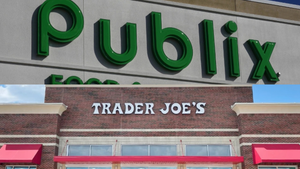A forum for contributed pieces from industry thought leaders, retailers, wholesalers and manufacturers. The views expressed are those of the authors.
Rethink the role of product affinities to boost customer experienceRethink the role of product affinities to boost customer experience
Using their data, retailers can analyze transactions to identify the commonality and trends of products or groups of products purchased

Matthew Pavich is a contributor to Supermarket News and senior director of retail innovation at Revionics, an Aptos Company. The views expressed here are those of the author.

Some products just go together perfectly. Peanut butter and jelly. Shampoo and conditioner. Cookies and milk.
By recognizing the pairings above, you’ve already started down the path of identifying product affinities. But what about frozen pizza and ice cream? Beer and diapers? Those might also be popular affinities at your stores or online channel — a reality currently hidden deep within your sales data.
By analyzing affinities, retailers can better understand the strength of the relationship between two items or a group of items. And in doing so, they can recommend items that would go well with customers’ future purchases and ultimately increase basket size and deepen customer relationships.
As retailers adapt to changing consumer loyalties and demand shifts, there has never been a better time to understand the importance of affinities and how they can be leveraged to drive sales volumes even higher.
Here are a few considerations to keep in mind as you evaluate affinities and their potential impact on your business.
The Data Tells a Story (if Interpreted Correctly)
Data always tells a story, and retailers’ transaction logs are no exception. With this data at their fingertips, and by leveraging the power of AI and advanced analytics, retailers can analyze transactions across customers to identify the commonality and trends of products or groups of products purchased.
Here are some common questions that retailers can look to answer:
• What are the products most likely to be bought together in one basket?
• What is the measured strength of the relationship between two items? For example, the affinity of 0.59 between product X and product Y means that if 100 people buy product X, 59 of them will also buy product Y.
• What is the directionality of the affinity? That is, does product X drive the sale of product Y, or vice versa?
Analyzing the transaction and affinity relationships further will help retailers determine if a product is a basket builder or a trip driver. As the phrase suggests, a trip driver product is what motivates a customer to visit the store and make a purchase, while a basket builder is an item that prompts a consumer to buy another item. A hot dog, for instance, could be considered a basket builder, as it prompts the purchase of relish, mustard, ketchup and buns.
Boosting Average Basket Value with Affinities
Once armed with the above information, retailers can begin leveraging affinities to increase basket value. Retailers could have the top product pairs for their store-brand items assorted together during the promotional cycle, or promoted together in a flyer or in an email. Retailers can also present offers that combine strong national brands with private label brands to help drive a trial of their own brand offerings.
By understanding the role that affinity (along with cannibalization) plays in promotions, retailers can also drive better promotional impacts at the category level. Often, a product may drive better individual lifts, but the category as a whole may suffer when it is promoted.
Understanding the impacts of affinity and cannibalization can help retailers better plan and profit from successful promotions while introducing more shoppers to their store brands.
About the Author
You May Also Like






